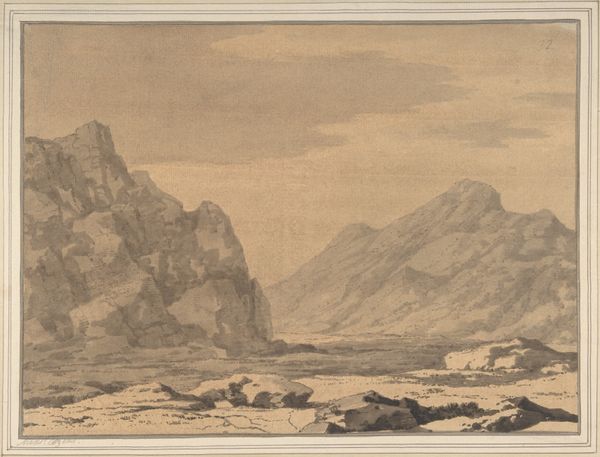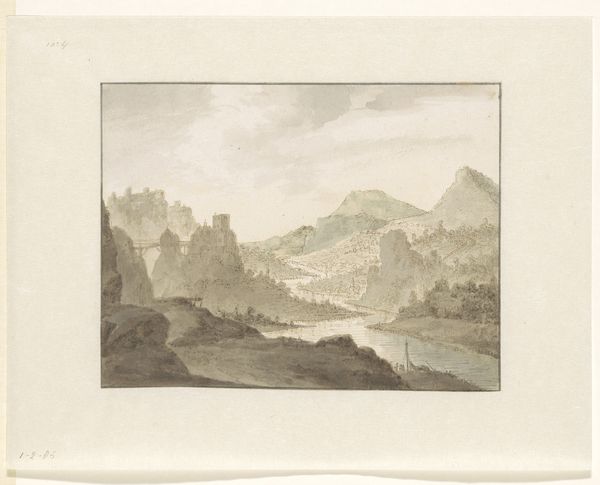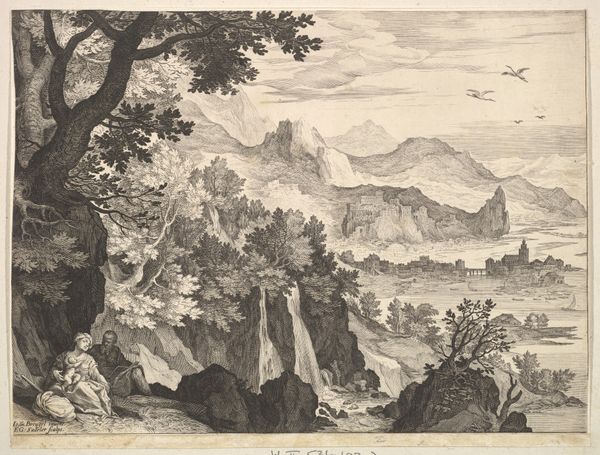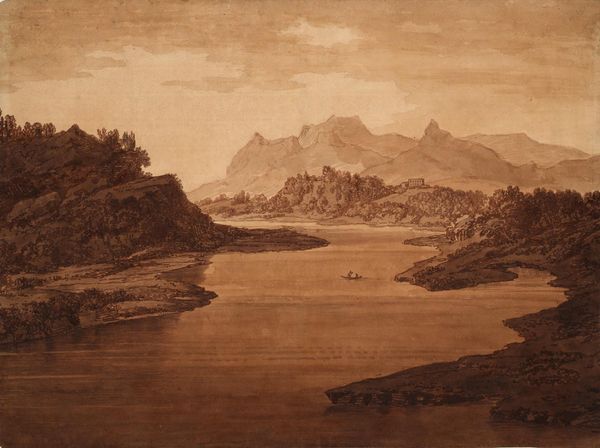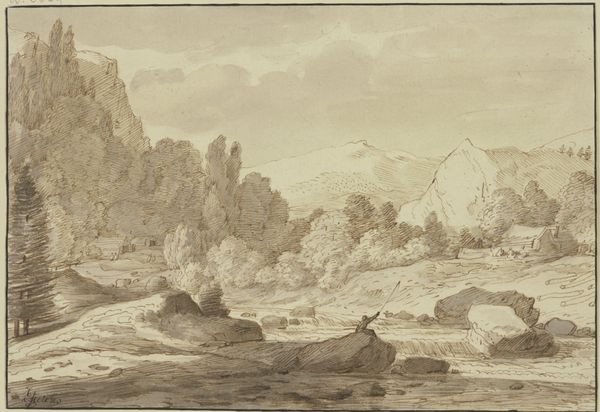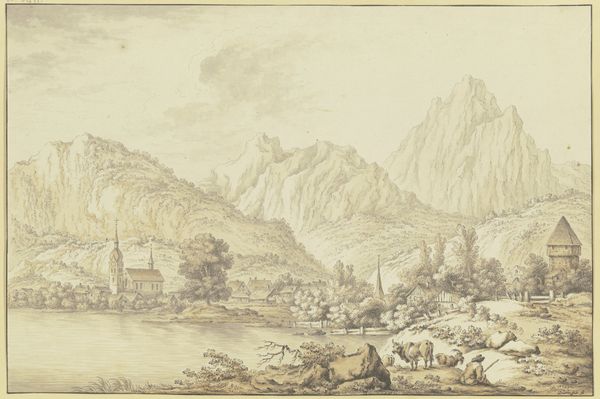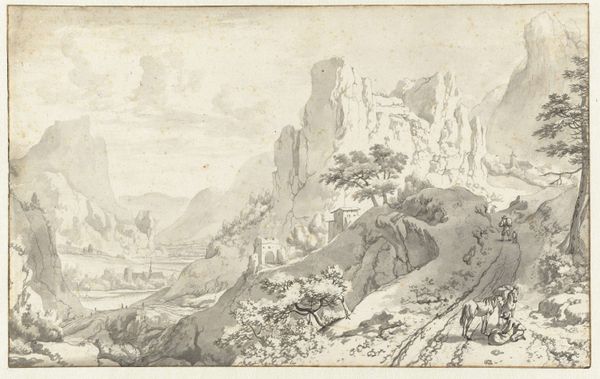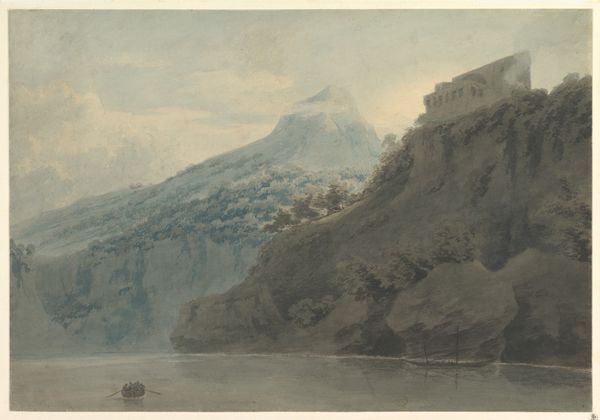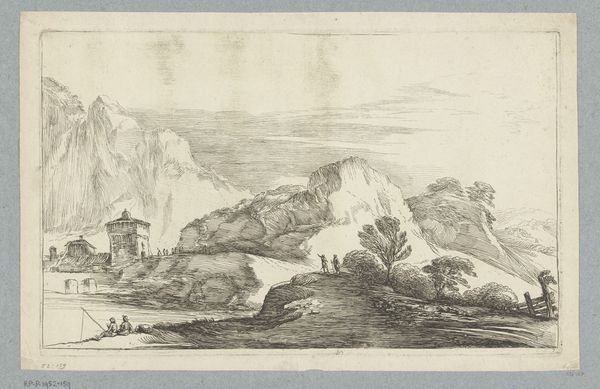
Blick in ein Flusstal mit felsigen Ufern, links auf einem Felsen eine Kirche
0:00
0:00
drawing, etching, watercolor, ink
#
drawing
#
etching
#
landscape
#
classical-realism
#
etching
#
watercolor
#
ink
#
pencil drawing
#
romanticism
#
watercolor
Copyright: Public Domain
Franz Schütz made this landscape view with pen and brown ink and watercolor wash, probably in the late 18th century. It is not the most spectacular landscape, but the artist clearly enjoyed the chance to depict it. Here, the qualities of the materials are essential. Schütz would have needed a steady hand to guide the pen, and a refined sense for how the diluted washes would ultimately look on the paper. This work shows the appeal of rendering light through delicate monochrome tonalities. The church perched high on the hill shows how the landscape has been reshaped by human industry and faith. While seemingly modest, drawings like these demonstrate how the skills involved in the production process are tied to wider social issues and aesthetic appreciation. It challenges traditional distinctions between fine art and the skilled craft required to produce such works.
Comments
No comments
Be the first to comment and join the conversation on the ultimate creative platform.
